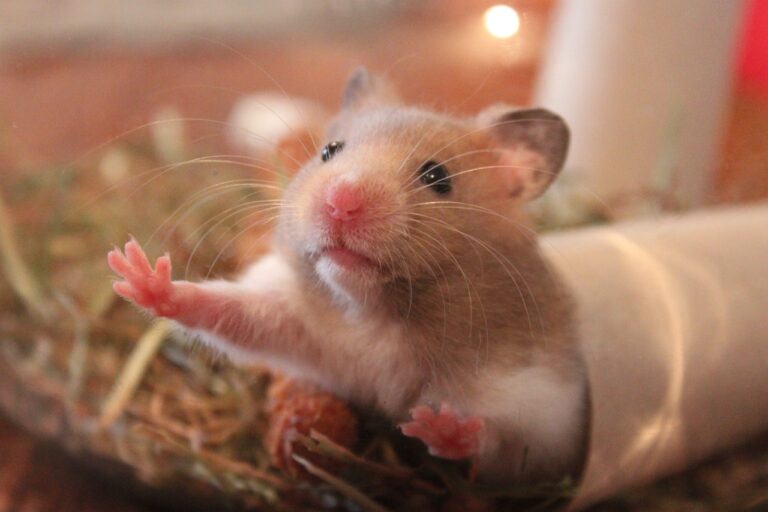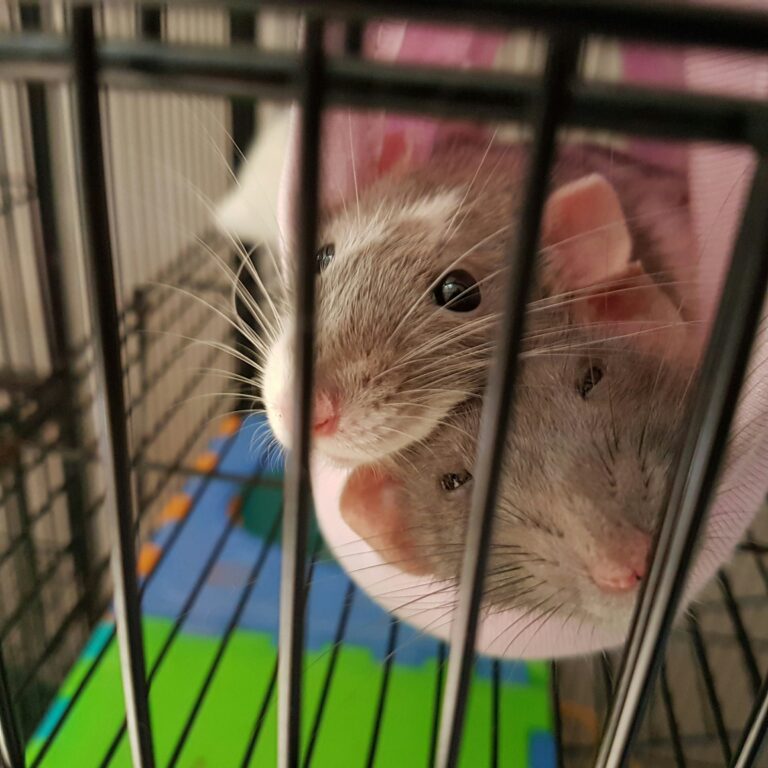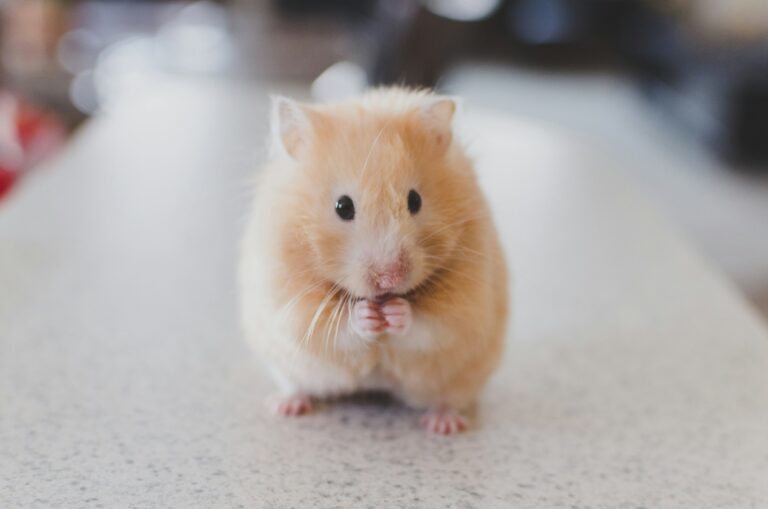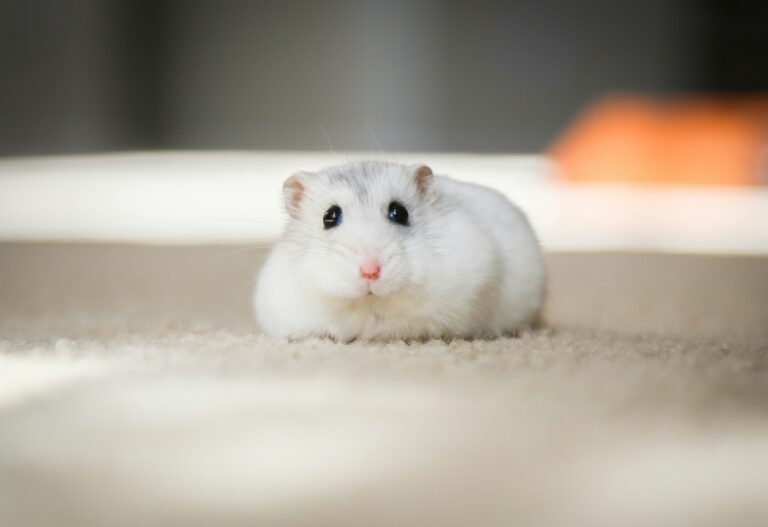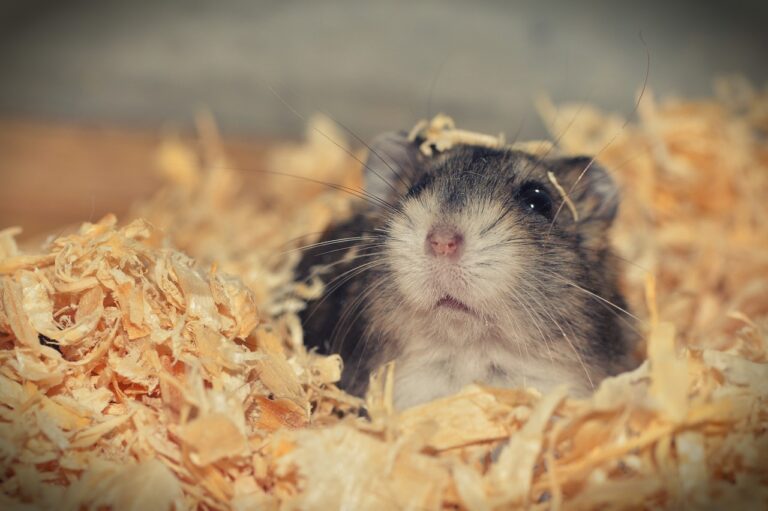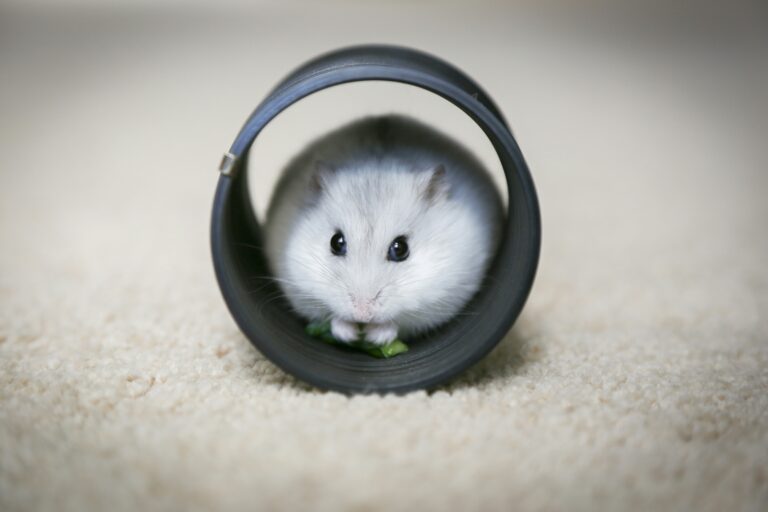Senior Hamster Care: Ensuring a Comfortable Life for Your Pet
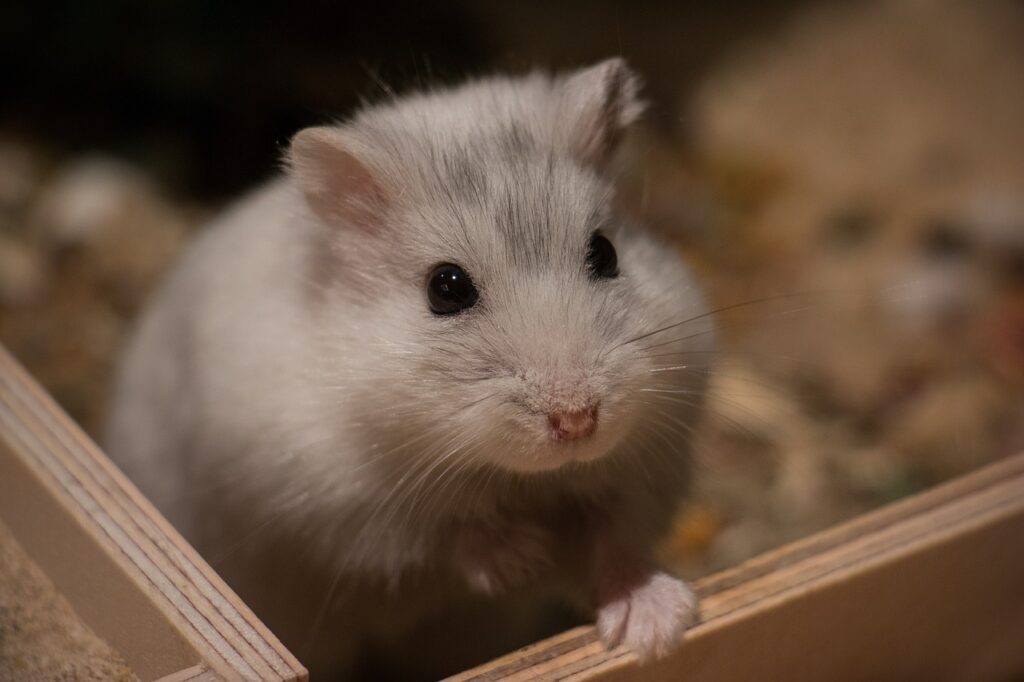
As hamsters age, their needs and care requirements change. Like all pets, senior hamsters need special attention to ensure they remain healthy and comfortable during their figurative golden years. This guide covers everything you need to know about senior hamster care, from dietary adjustments to recognizing health issues.
Understanding the Aging Process in Hamsters
Hamsters typically live between 2 to 3 years, with some species, like the Roborovski hamster, occasionally living up to 4 years. As they approach the end of their lifespan, you’ll notice several changes in their behavior, physical condition, and activity levels.
Signs of Aging in Hamsters
Decreased Activity: Senior hamsters often sleep more and are less active. You might see them running on their wheel less frequently.
Weight Fluctuations: Aging hamsters may lose weight due to muscle mass reduction or dental issues affecting their ability to eat.
Diminished Senses: Hearing and vision may decline, causing your hamster to become more startled by sudden movements or noises.
Coat Changes: Their fur might become thinner, duller, or develop bald patches.
Mobility Issues: Arthritis or general weakness can lead to difficulty moving around, climbing, or navigating their habitat.

Adjusting Diet for Senior Hamsters
Proper nutrition is crucial for maintaining the health of an older hamster. Here are some dietary adjustments and considerations:
Nutrient-Rich Food
High-Quality Pellets: Ensure your hamster’s diet includes high-quality pellets which provide balanced nutrition.
Fresh Vegetables and Fruits: Incorporate safe vegetables and fruits like carrots, cucumbers, and apples. These provide essential vitamins and hydration.
Protein Boosts: Offer small amounts of boiled egg, mealworms, or tofu to maintain muscle mass and strength.
Easy-to-Eat Options
Senior hamsters might struggle with hard foods due to dental problems. Consider:
- Soaked Pellets: Soak pellets in water to soften them.
- Chopped Vegetables: Cut fresh food into small, manageable pieces.
- Baby Food: Baby food that is low in sugar and sodium can be a gentle option for hamsters with severe dental issues.

Housing Adjustments for Comfort
Creating a comfortable and safe environment is essential for senior hamsters. Here’s how to modify their habitat:
Bedding and Nesting
- Soft Bedding: Use soft, absorbent bedding to cushion their movements and provide warmth.
- Easy Access Nest: Ensure their nesting area is easily accessible and close to food and water.
Cage Modifications
- Low Platforms: Reduce the height of platforms and remove steep ramps to prevent falls.
- Accessible Water and Food: Place water bottles and food dishes at ground level for easy access.
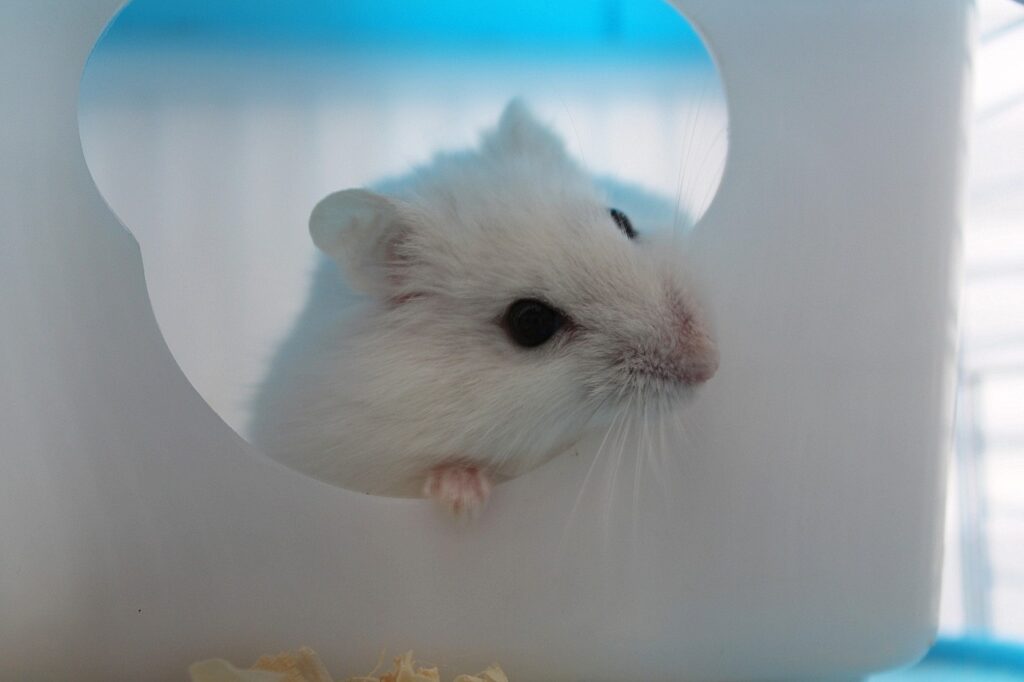
Monitoring Health and Preventing Issues
Regular health checks and preventative care are vital for senior hamsters. Here’s what to look out for and how to address common issues:
Regular Vet Visits
Schedule regular vet visits to monitor your hamster’s health. An exotic pet vet can provide tailored advice and early intervention if problems arise.
Common Health Issues
Dental Problems: Overgrown teeth can cause eating difficulties. Regularly check your hamster’s teeth and provide chew toys to keep them worn down.
Arthritis: Signs include difficulty moving or reluctance to use the wheel. Provide a comfortable habitat with minimal climbing.
Tumors: Older hamsters are prone to tumors. Check for unusual lumps and seek veterinary advice if you notice any growths.
Respiratory Issues: Keep the cage clean and dust-free to prevent respiratory problems. Watch for signs like wheezing or labored breathing.
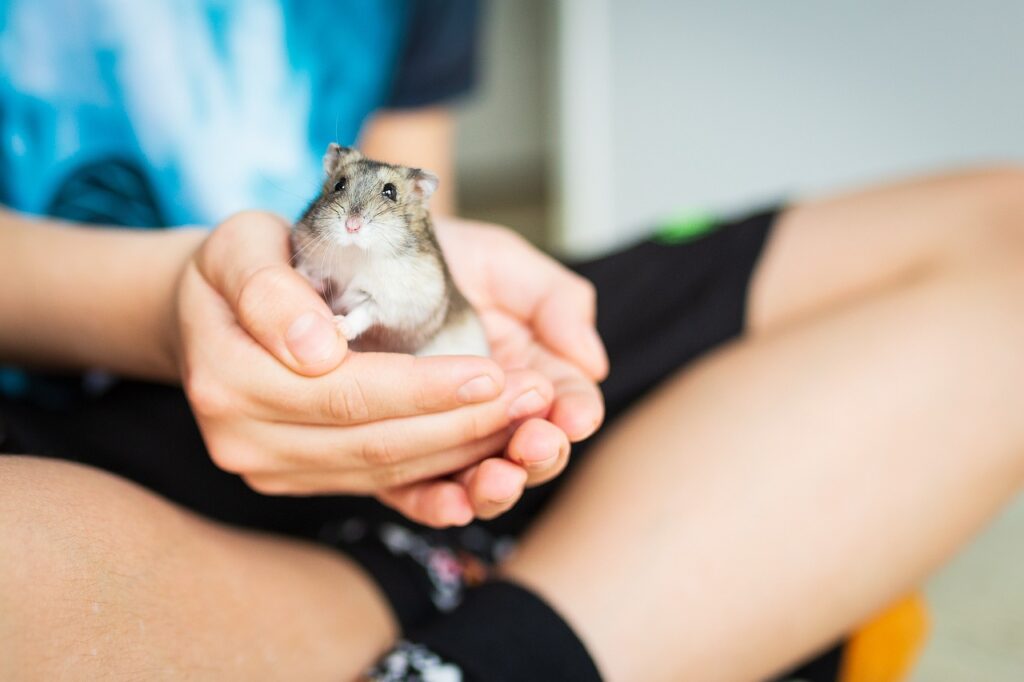
Enhancing Quality of Life
Ensuring your senior hamster remains happy and stimulated is just as important as their physical health. Here are some tips:
Gentle Interaction
- Handling: Handle your hamster gently and support their body to avoid putting stress on their joints.
- Quiet Environment: Keep their habitat in a quiet area to avoid startling them with loud noises or sudden movements.
Mental Stimulation
- Simple Toys: Provide toys that are easy to use and do not require extensive climbing or squeezing.
- Foraging Activities: Scatter food or hide treats to encourage natural foraging behavior, keeping them mentally stimulated.
Comfort and Security
- Consistent Routine: Stick to a consistent feeding and cleaning schedule to reduce stress.
- Familiar Scents: Use familiar bedding and toys to create a comforting environment.
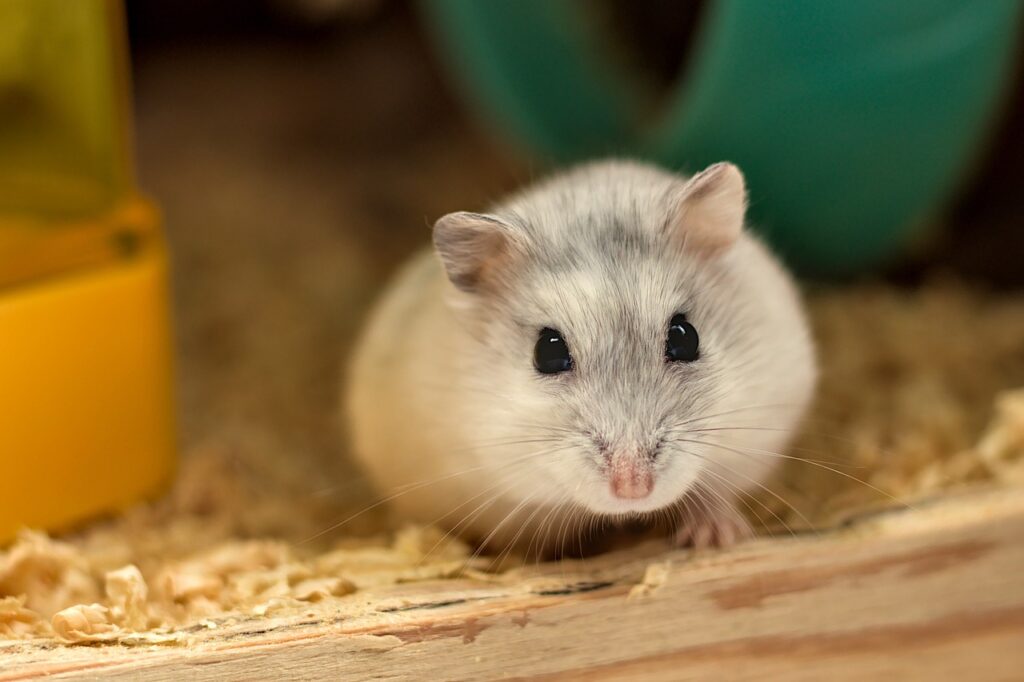
Recognizing End-of-Life Signs
As your hamster approaches the end of their life, it’s important to recognize the signs and provide the necessary care.
Signs of Decline
- Extreme Weakness: Difficulty moving or standing.
- Loss of Appetite: Refusal to eat or drink.
- Labored Breathing: Signs of distress or difficulty breathing.
Providing Comfort
- Palliative Care: Focus on making your hamster comfortable with soft bedding, warmth, and easy access to food and water.
- Limit Handling: Reduce handling to avoid causing stress or discomfort.
When to Seek Help
If you notice significant suffering or decline in your hamster’s condition, consult with your vet about the best course of action, including the possibility of humane euthanasia.
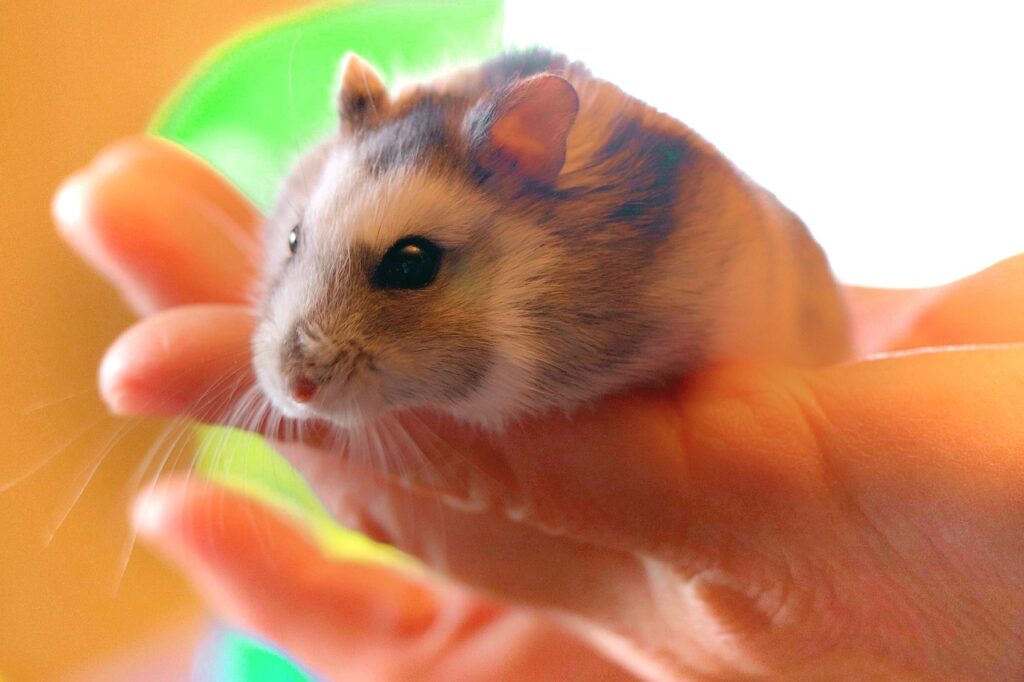
Conclusion
Caring for a senior hamster involves adjusting their diet, modifying their habitat, monitoring their health, and ensuring they remain comfortable and mentally stimulated. By understanding and addressing the unique needs of aging hamsters, you can provide a loving and supportive environment that enhances their quality of life during their final months. Regular vet visits, gentle interaction, and attentive care will help your senior hamster live out their remaining time with dignity and comfort.
Remember, every hamster is unique, and their aging process will vary. Observing and responding to their individual needs is the best way to ensure they remain happy and healthy throughout their lives.

